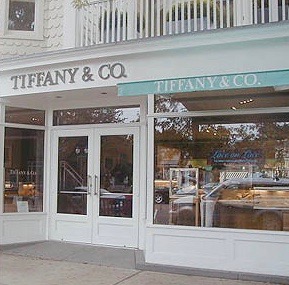
Thursday, May 7
I am back at BusinessWeek, working on the copydesk. I have at least three stories to turn around, some handed down to me by one slacker colleague who has finagled some way of leaving early. I am laboring at a very antique, manual machine, which seems unlikely to have any way of being part of the magazine’s electronic network. When I try to utilize the system’s query mechanism, which is supposed to let you track a story’s progress from writer to various editors, of course that doesn’t work. Another grueling shift looms.
Time to cast aside such sweaty dreams and wake up!
Just what will the Hamptons’ economy be like once things reopen? Typically, it is a very peculiar scene: On East Hampton’s main street, beginning at the Hampton Jitney stop and running up to Newtown Lane, real estate offices and designer-label stores predominate, an ever-changing cast of toffee-nosed boulevardiers.
Whether Polo Ralph Lauren or Eileen Fisher, these are not so much like genuine stores as they are luxe advertisements—the kind you see on the opening pages of Vogue or Vanity Fair. Their presence allows the companies to post “Paris * New York * East Hampton” on their plus-size shopping bags. Will such outfits return—or will many of the storefronts be vacant?
Is there any chance that genuinely useful stores will appear instead? The pandemic and economic collapse has meant, at least theoretically, the possibility of remaking the local scene. Why not an interesting art gallery or an affordable, ethnic eatery? Most of the restaurants out here are just variations on one theme: mid- to high-priced Italian cuisine, grilled branzino or braised veal osso buco. What about some lower-priced Asian fusion or Vietnamese grub? What about a store selling clothing that working people might actually wear? Or a performance space for edgy theater or dance? Maybe some of these storefronts should revert to residences, as many of them once likely were.
Many of the local full-time residents probably like things as they are. They’ve come to depend on the seasonal tourist trade and business from the wealthy who own vacation homes here. If not for the resort-town economy, East Hampton would probably resemble seedier and less-developed North Fork burgs such as Mattituck or Flanders. Moreover, the true locals have their own mostly separate institutions, including the volunteer fire department, the VFW post, the community Presbyterian church, and less-posh restaurants such as Springs Tavern.
It’s a beautiful if still cool, sunny day. As I have said Peapod is due to make an afternoon delivery—they typically send a text message a short while before they expect to arrive. Beforehand, we’ll have to set up a socially distanced table outside for them to leave stuff on, then make a space to put groceries on inside the house. Anything that doesn’t need refrigeration will be left unhandled in its own quarantine for three days.
And sure enough, the Peapod delivery arrived around 3:50 p.m. We got many of the things we ordered, but 18 were missing, including scallions, cabbage, boy choy, walnuts, cucumbers, napkins, and Pepcid.
Dinner: leftover black beans and rice, Asian green beans, green salad
Entertainment: Two episodes of The Valhalla Murders.
